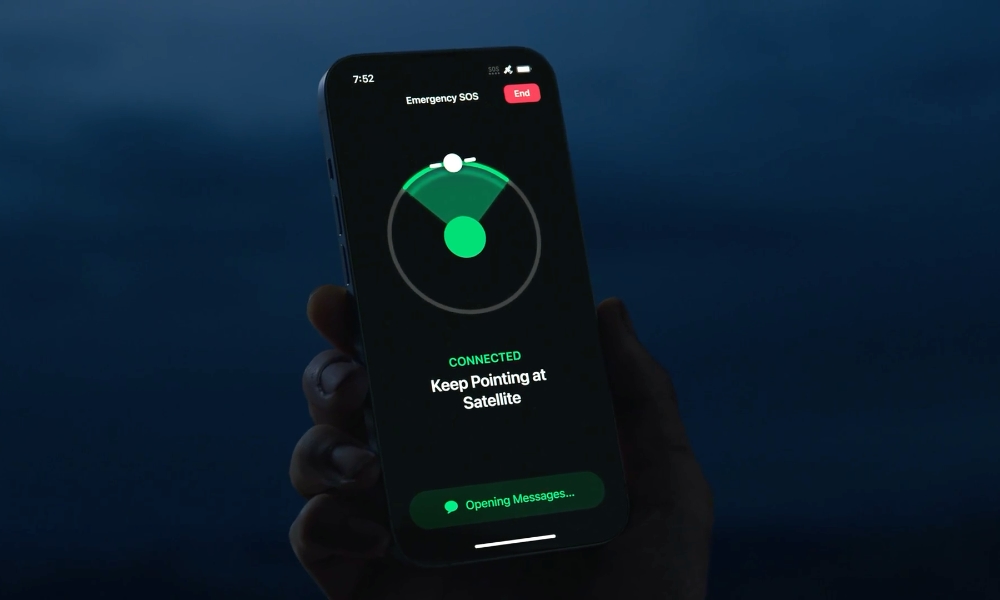Apple’s Emergency SOS via Satellite and Apple Watch Blood Oxygen Feature Save Lives
 Credit: Apple
Credit: Apple
Toggle Dark Mode
Apple’s devices continue saving lives. Two recent reports demonstrate just how features like Emergency SOS via Satellite on the iPhone and the blood oxygen monitoring on the Apple Watch have helped to turn around situations that could have had much sadder endings.
In the first report, two men were rescued from deep snow near Nanoose Bay, north of Nanaimo, thanks to the Emergency SOS via Satellite feature on one of the men’s iPhones, which automatically summoned rescuers to the stranded travelers in the remote and snowy area of British Columbia. The men would have otherwise faced a dangerous 10-kilometer hike in freezing temperatures and would have likely “succumbed to hypothermia before getting out,” according to search manager Nick Rivers, who serves as president of the Qualicum Beach-based Arrowsmith Search and Rescue.
The two men became stranded Wednesday evening when their SUV went off of a logging road and slid down an embankment. The iPhone’s SOS via Satellite feature was automatically triggered by the iPhone’s Crash Detection and sent the accident site’s latitude and longitude information to authorities. There was no cell phone service available in the remote area, so the technology proved to be a lifesaver for the stranded pair.
The Oceanside detachment of the Royal Canadian Mounted Police (RCMP) coordinated with search and rescue teams, who deployed a heat sensor-equipped drone to find the SUV. A recovery vehicle with snow tracks and trucks equipped with chains were sent out to find the stranded pair. Happily, both men suffered only minor injuries and were safely evacuated from the accident scene.
It’s a great piece of tech to carry in a pocket that can absolutely save your life without knowing itNick Rivers, Arrowsmith Search and Rescue
Rivers said that this incident marks the first time that the Arrowsmith Search and Rescue responded to an automatic satellite connection using a cellphone, although it’s not the first time the feature has saved lives.
In August, the iPhone 14’s Emergency SOS via Satellite feature helped lead rescuers to a family trapped by wildfires that devastated the island of Maui in Hawaii.
A family of five had visited the Outlets of Maui, a shopping mall in Lahaina where the wildfires were raging. They were trapped inside the vehicle with no means of escape, as the wildfires raged around them. Luckily, one passenger was able to use their iPhone 14 to contact emergency responders, who were able to rescue the occupants of the vehicle.
Apple Watch Blood Oxygen Detection
A 14-year-old with acute altitude sickness was able to be kept stable during a long night at 14,000 feet in Peru, thanks to an Apple Watch with blood oxygen detection.
An Apple Watch user named Joseph reached out to Apple CEO Tim Cook with the story of how the Apple Watch helped to monitor Joseph’s 14-year-old son’s blood oxygen levels. He shared his story, as well as Cook’s response, with AppleInsider.
Joseph’s son developed acute altitude sickness, which can quickly become lethal if not monitored. Luckily, Joseph had an Apple Watch with the blood oxygen detection feature, allowing him to monitor his offspring’s blood oxygen levels through the night until help could arrive.
Cook responded to Joseph’s email:
This sounds like a terrifying situation. I trust that he is ok now.
Thanks for sharing his story with us.
Please give him my best.Tim
The Apple Watch is equipped with several health-related sensors, including blood oxygen monitoring, heart rate monitoring, ECG functionality, and more. However, Apple has been forced to disable the blood oxygen monitoring capabilities in the Apple Watch Series 9 and Apple Watch Ultra 2 models now being sold in the United States as a result of an ongoing ban by the US International Trade Commission (ITC), which found that the blood oxygen sensing technology violated at least two patents owned by another health technology company.
Apple is in the process of appealing that decision. In the meantime, some Apple Watches being sold by third-party sellers, such as Amazon, Best Buy, and others, may still have the feature enabled, as the ban does not impact their ability to sell off their existing stock. Apple Watch models sold outside of the US are also unaffected by the ban and retain the same blood oxygen monitoring features as before.








